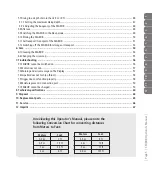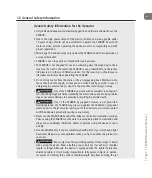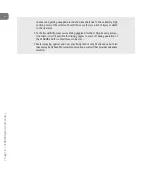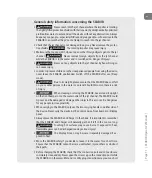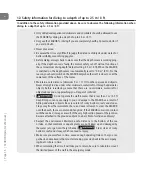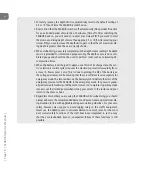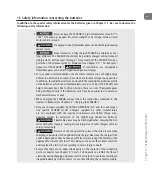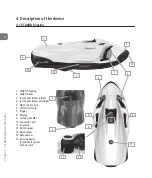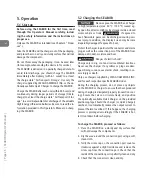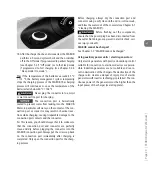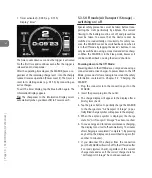
1
| P
age 19 | SEABOB Operator's Manual |
1.5 Safety information concerning the batteries
In addition to the special safety information for the batteries given in Chapter 1.1, be sure to observe the
following safety information:
•
Never expose the SEABOB to high temperatures (max. 60 °C
/ 140 °F) caused e.g. by open fire, direct sunlight or by storage inside a closed
motor vehicle or trunk.
•
If exposed to heat, flammable gases can be discharged causing
serious injury.
•
Never transport a fully charged SEABOB by airplane or over
long distances. The SEABOB should only be partially charged during transport
(charge state "Air Transport / Storage"). Only switch off the SEABOB for trans-
port when the airplane symbol is displayed (see Chapter 5.11 "Air transport /
transport of the SEABOB").
If instructions are disregarded,
flammable gases can be discharged causing serious injury!
• For use under normal conditions, the chemicals contained in each High-Energy
Lithium-Ion battery are encased in a sealed case for safe storage in any position.
In addition, the individual cells are enclosed in the watertight aluminium profile
of the batteries, which can withstand pressures up to 12 bar (174.045 PSI) and
help to dissipate heat. Due to this protection, there is a risk of flammable gases
being discharged only if the batteries cells have been subjected to excessive
mechanical stresses or heat.
• When charging the SEABOB, always follow the instructions contained in this
Operator's Manual (see Chapter 5.2 "Charging the SEABOB").
• Only use chargers supplied by CAYAGO AMERICAS INC. and for each respec-
tive specific SEABOB model. Chargers supplied by other manufacturers
are not equipped with the special microprocessor-controlled charge man-
agement system for protection of the High-Energy Lithium-Ion batteries.
Flammable gases may be discharged when charging the bat-
teries with other chargers, causing serious injury. Use of other chargers will also
void your warranty.
•
Beware of the strong electric currents that are present when
charging, in particular in the optional Quick Charger. Never use the charger if the
outlet is damaged or does not have a sufficient current rating (the outlet must be
approved for currents of at least 10 A). Doing so can cause the cable to catch fire
and may lead to electric shock resulting in severe injury or death.
• Ensure that there are no dried salt deposits on the contacts of the connection
port or connector (see Chapter 6 "Care"). Salt deposits can inhibit the flow of
electricity during charging and cause electrical contacts to overheat, resulting in
irreparable damage to the contacts or even fires affecting the contacts or cable.

